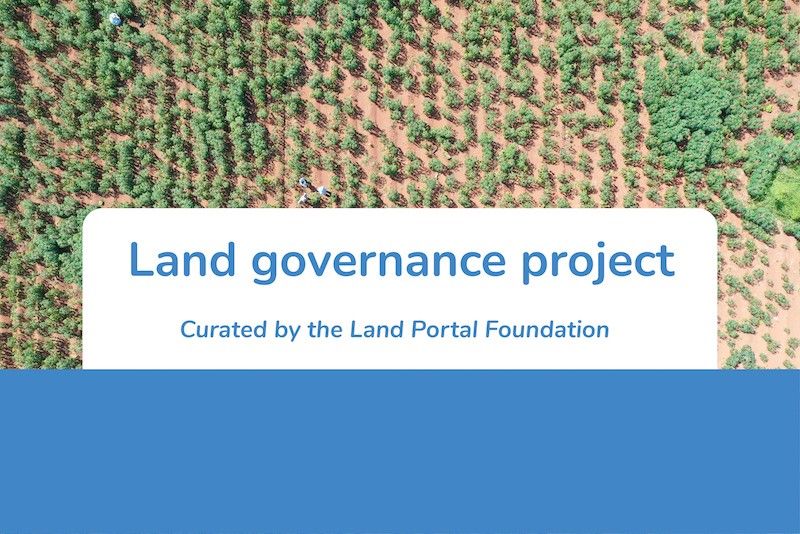Community / Land projects / Sustainable and Integrated landscape management of the Western Area Peninsula
Sustainable and Integrated landscape management of the Western Area Peninsula

€4880934.045
04/22 - 04/22
Завершено
This project is part of
Implementing Organisations
Donors
Data Providers
Objectives
To strengthen conditions for the sustainable and integrated management of multiple-use landscapes (piloted in the WAP landscape) to protect globally significant biodiversity, safeguard ecosystem services generating local and national socio-economic benefits, and advance towards land degradation neutrality.
Other
Note: Disbursement data provided is cumulative and covers disbursement made by the project Agency.
Target Groups
Normal 0 false false false en-US X-NONE X-NONE /* Style Definitions */ table.MsoNormalTable {mso-style-name:"Normálna tabulka"; mso-tstyle-rowband-size:0; mso-tstyle-colband-size:0; mso-style-noshow:yes; mso-style-priority:99; mso-style-parent:""; mso-padding-alt:0in 5.4pt 0in 5.4pt; mso-para-margin:0in; mso-para-margin-bottom:.0001pt; mso-pagination:widow-orphan; font-size:10.0pt; font-family:"Calibri",sans-serif;} The project will generate national and local benefits in the following ways. At the national level, capacities of national MADs (especially, MLHE, MAF, MTCA, EPA, NPAA) for integrated and sustainable land management, forest landscape restoration, PA management, use of ecosystem service evaluations and spatial planning in land use planning and decision-making, incorporation of a gender-sensitive approach will be greatly enhanced. Furthermore, as noted in UNDP’s Country Programme Document for 2020-2023, poverty persists primarily because of four interdependent drivers, one of which is recurrent disasters due to increasing vulnerability to climate change-related stresses. By promoting integrated and sustainable land management in the WAP landscape this project will increase environmental and economic resilience in the WAP landscape through its activities related to protecting mangrove ecosystems, reducing deforestation and land degradation, managing the use of community natural assets and supporting sustainable livelihoods. Findings from the socio-economic assessment undertaken during the PPG revealed that poverty is evident in the surveyed communities and unemployed inhabitants are dependent on the forest resources. Given the nexus between reducing environmental vulnerability, building disaster resilience and poverty eradication, the WAP Master Plan will be produced via a participatory and highly collaborative and gender responsive planning process, wherein all stakeholder groups will participate in negotiating stakes and objectives to be included in the integrated landscape management plan (budgeted under outcome 1). Within the scope of the Master Plan, alternative IGAs will be promoted (ensuring that 50% of beneficiaries are women and 60% are youth) and the viability of different value chains assessed and promoted (e.g., waste-to-wealth, processing of agricultural products, ecotourism). To mitigate the risks of economic displacement, the project has budgeted for an in-depth Environment and Social Impact Assessment (ESIA) within the first 6 months of implementation, based on which an Environment and Social Impacts Management Plan (ESMP) will be prepared and implemented, including a resettlement plan and an Indigenous Peoples/Ethnic Minority plan, if deemed necessary. The matter of Free, Prior and Informed Consent (FPIC) will be explored during the ESIA and the approach applied if deemed appropriate. Local communities will participate in reforestation of degraded mangroves with indigenous trees and clearing invasive species if present. These tasks will utilize payments for public works to provide cash transfers as payment for carrying out these public works. Part of the benefits for the communities may include harvesting of non-timber forest products (NTFPs) from mangrove forests, under sustainable use plans (e.g. through oyster, sea cucumber or seaweed cultivation). The project will provide training on improved harvesting techniques, processing, packaging and marketing, to those engaged in NTFP value chain (in conjunction with Output 2.4). The possibility of carbon sales from the community PA will also be explored, building on the experiences generated by the Gola Rainforest National Park carbon credit scheme. These national and local benefits will help maintain support for the continued implementation and enforcement of the WAP Master Plan in turn resulting in global environmental benefits. The combined impacts of all the project outcomes are expected to deliver the following local benefits: Increased yields of at least three crops by at least 50% through sustainable land management activities, agroforestry, and through associated reductions in land degradation. About 10% of the population of WAP (4,427 people) benefitting, in equal numbers of men and women. Income generating activities will increase household incomes and create employment, particularly also for targeted youth. The project will advance business skills and support access to vocational training. This will address the mismatch between the skills supply and the labour market demand by providing targeted training on business for young people. Connecting households to improved energy initiatives will reduce the amount of firewood required to cook and heat households. This is likely to reduce the labour required to procure firewood with dividends to women who often bear the responsibility of procuring firewood. Increased employment opportunities, household incomes and productivity of three crops will contribute to reducing food insecurity. Equal number of women and men will benefit (guided by the gender action plan). Reduction in soil erosion through better land management and reforestation, with consequent reduced siltation of water systems and associated reductions in water treatment and hydroelectricity production costs, and reduced vulnerability to disastrous floods. Diversified, resilient and improved livelihoods through income generating activities, with attendant reductions in climate vulnerability of households that have access to additional incomes. Economic value stemming from the protection of valuable biodiversity as well as soil and biomass sequestration of carbon, both of which contribute to the preservation of global public goods. Economic value from increasing the knowledge base on ILM, watershed services and forest-friendly land rehabilitation approaches that can be integrated into the GoSL’s national land management strategy.



